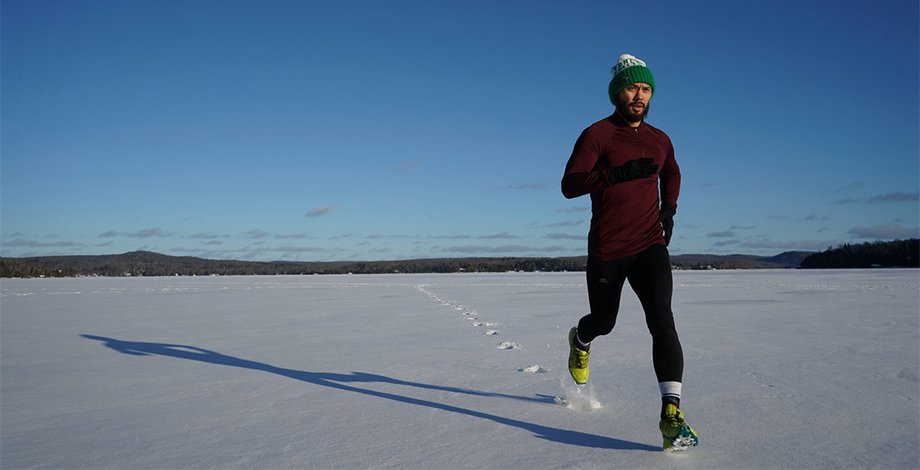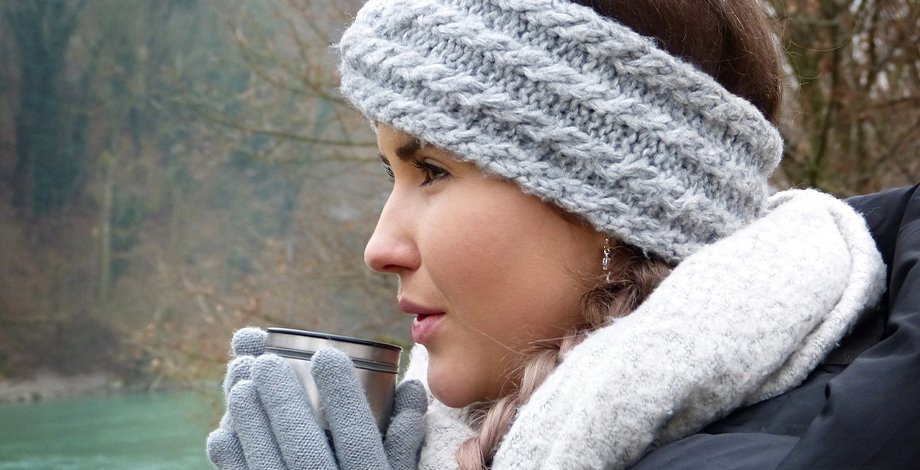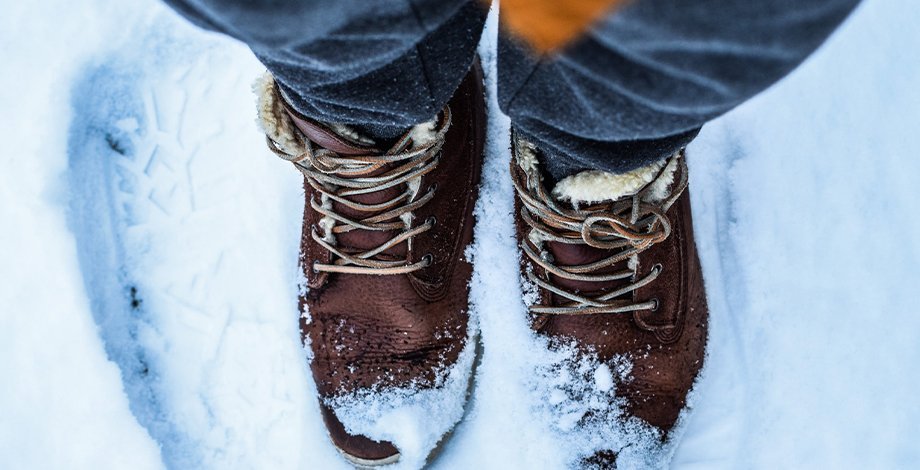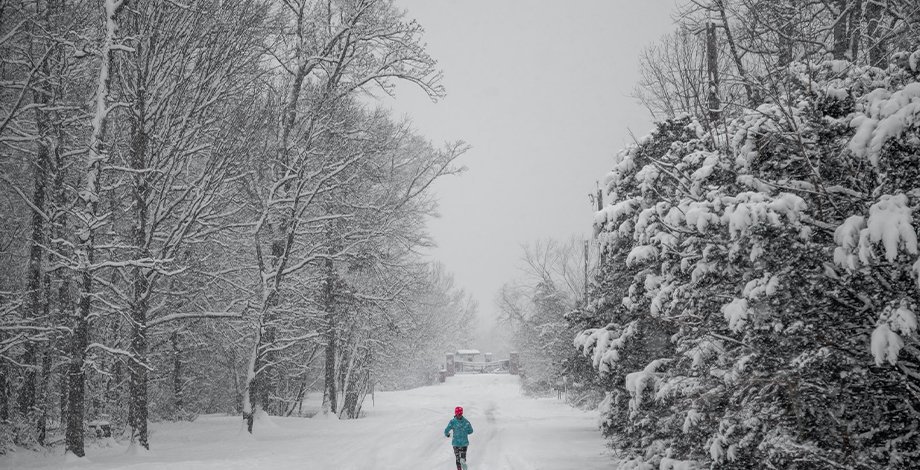What to Wear When Running in the Cold

Most of us who don’t like missing out on training sessions and working out probably hate it when winter comes. It’s not the same for everyone, but I can say from experience that I absolutely hate the cold for several reasons. It’s hard to get out of bed, it’s hard to go outside, and it’s definitely harder to go out for my morning jogs.
However, we can’t simply call it quits during wintertime just because the weather is colder. Even though it’s less comfortable than summertime, there are a few things we can do in order to make it a bit more enjoyable. Among the best ways to do this is to know what to wear when running in the cold. This article will cover a few crucial dressing tips that will certainly make your runs in the cold more bearable.
Contents
How to Properly Take Advantage of Layering

Not knowing what to wear when heading out to run in cold weather can usually result in either sweating more than usual or freezing from top to bottom. Because of this, layering your clothes has become a sort of science when it comes to running in the cold. It’s not extremely hard to get the hang of, as you simply need to know which combinations of clothes work and what types of materials to keep an eye out for. A few things you need to keep in mind when it comes to layering include the following parts.
- Base Layer – This includes the initial set of clothes that will be touching your skin. It’s crucial that you wear clothes that are moisture-wicking. This means that the fabric has two essential jobs to do when you exercise. The first is to quickly force all of the sweat to the other layer of the fabric, and the second is to dry as quickly as possible. The base layer is a crucial part of cold weather running gear.
- Insulating Layer – The first layer was meant for comfortability and breathability, the second one is the part that keeps all the warmth in and all the cold out. This includes clothes that are specifically tagged as insulating winter clothes. A few examples include clothes made of wool, one of the best insulation fabrics around.
- Outer Layer – The outer layer is usually the easiest, as this often only means putting on a jacket or a vest for extra warmth. This layer also includes a few of the most crucial items, including a hat for your ears and head, gloves for your hands, and more.
I’ll share details on what you’ll be best off weaning during wintertime and include a few words for each body part. We will start from the upper body and move down towards the feet, which may be the most important part to devote extra attention to.
Upper Body

The upper body consists of all body parts from your head and going down until your backbone. This is also where most of the work will be done in order to make sure you’re both comfortable and warm enough so that you can enjoy your runs. When it comes to running in the cold, you don’t need extremely expensive equipment, but you will need to plan carefully, as this can affect your comfort a lot, which is a huge part of the entire process. Let’s start with the head.
Hats
When it comes to the head area, the part people worry about most is their ears. Having cold ears is actually painful, so the issues of breathing cold air can definitely make things a lot less comfortable. In this case, you should look for special running hats, or ones that only cover your ears. As I said, you don’t need to worry about the top of your head as much as your ears, trust me. Keep in mind if you get something like a beanie it should be made from sweat-resistant and soft fabric.
Base Layer
As I mentioned, this layer is crucial for comfort. Wear only soft fabrics for the base layers and ones that are breathable enough to handle the extra layers on top of them. This also includes breathable and sweat-resistant fabrics and a soft material that won’t cause you any anxiety while running in the cold.
Insulation Layer
For the insulation layer regarding the upper body, this includes soft and breathable hoodies, workout compression shirts, or other types of clothes that are very soft, preferably from wool, and breathable enough. Remember, this is the layer that is going to keep you warm the most, meaning thicker fabrics are welcome as well.
Gloves
Personally, I know that cold hands mean that your entire body is going to feel cold, no matter where you are or what season of the year it is. If my hands are cold then I am cold, period. If that’s the same with you, then there’s no point in wearing layers if your hands are still cold. For this reason, you’re going to need the best running gloves money can buy. This includes lightweight, flexible, cold and wind-resistant gloves. The best choice usually involves 90% to 100% polyester running gloves for cold weather.
Lower Body

You may think that keeping your upper body warm is more important but you’d be wrong. Sure, it does take a bit more to get it right in that area, but making sure your legs and feet are comfortable and cozy is also a crucial task. The feet, much like the hands, can make your entire body feel cold if they are freezing.
Legs
When it comes to your legs, the base layer is going to be the most important. This more often than not includes wearing some type of sports tights. There are different ones for men and women or you can get unisex ones. The most important feature here is that they are comfortable and soft. You will be fine with just one more layer for your legs which often includes some breathable running pants.
One more important thing to remember here is your knees. Some people suffer from knee pain during colder periods. A great way to prevent knee injuries and add a lot of comfort is by wearing high-quality running knee braces.
Feet
The most important thing to remember regarding feet warmth is to never wear cotton socks when running. Cotton socks do feel great, but they aren’t ideal when combined with moisture and sweat. Cotton socks will quickly make your feet wet, cold, and very prone to blisters in both winter and summertime.
Conclusion

It’s not very difficult to get these tips for running in the cold right. You must remember these suggestions about what types of fabrics to look for, learn about the layering process, and most importantly, make sure you are comfortable with what you wear. So, make sure to put some thought into what you will wear based on these guidelines and enjoy your winter runs.